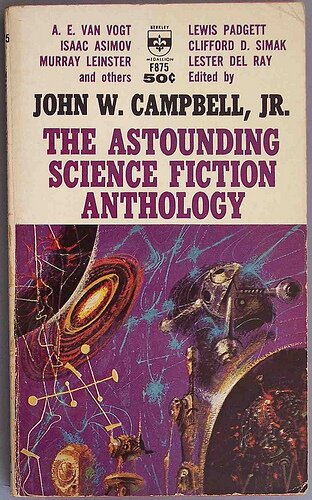Someone described a classic science fiction novel’s cover as a book cover that launched a thousand engineering careers, and I completely understood the sentiment as an engineer, a science fiction fan and science fiction author. What many don’t seem to understand is the connection between science fiction and STEM.
The engaging imagery on the book cover often sells the book, and it sets the reader’s expectations (or explains the environment, as in the case of “Ringworld” and “Integral Trees”). We talked about how science fiction in general inspired many to go into STEM careers and on to actual inventions. You can find articles listing everything that Star Trek has inspired in real life to date. Yet there are several trends that are inhibiting this trend in the next generation.
Fantasy Really Doesn’t Impact Real Life
Whether you’ve grown up reading Harry Potter or the latest crop of urban fantasy books, the issue the readers face is translating that to the real world beyond Halloween costumes and their entertainment budgets. Fantasy books can be fine entertainment, but if you want to encourage kids to want to design warp drive or cure cancer, they should be given books where the main characters are doing things like that (King David’s Spaceship, for one). Suppose the fantasy novels do inspire the child to become nobler and more heroic. That’s good for society, but it isn’t inspiring them to go into STEM. Throw some positive scifi in there so that someone gets the idea for the next big invention that will help humanity. And no, a lot of the current sci-fi titles don’t count if that’s your goal.
Dystopia Doesn’t Inspire
I was recently told science fiction was obsolete. After all, where are the new science fiction books, not counting the latest sequel to Dune or Ringworld? I said, Divergent, Blade Runner, and Maze Runner.
I was corrected. “No, those are young adult dystopian books, that’s all the rage right now.”
“Divergent has memory-wiping serums and the aftermath of failed genetic engineering. Blade Runner is artificially-made people and interstellar colonies. Maze Runner is high tech. It is science fiction.”
“Fine, but no one wants to live that way. And the stories are more about finding one’s identity and role of society. It is a coming of age story. You don’t have that in science fiction.”
There are positive science fiction coming of age novels. I know that Isaac Asimov’s Robbie the Robot books are barely known to anyone under 40, but Foundation is something in the same vein and optioned for TV. Robert Heinlein’s Starship Troopers was written as a coming-of-age novel, though the movies butchered it. Yes, there was more than one movie, and they get worse with time. Tunnel in the Sky was another of his coming-of-age books, yet it has been overlooked by filmmakers to date. What seems to be missing today is just that – many positive coming-of-age science fiction novels that kids can read and relate to personally, and not just “let’s overthrow the oppressive adults and assume a happy ever after” or “oh, the world isn’t ending, isn’t that great.”
I know that dystopian books have long been part of the young adult genre; 1984 and Brave New World are common references even for teens because the books are required reading for so many. However, the bumper crop of dystopian science fiction books aimed at young adults seems to be turning many off to science fiction as well as making them bitter and nihilistic. Such works may inspire political activism, and many seem written to do just that (clit-lit in particular). But very few seem to be making kids want to become biologists instead of environmental activists, physicists over anti-nuclear activists. While I can’t say how many programmers were inspired by Snow Crash, I can only hope that Ready Player One and Pacific Rim lead to both better hardware and software development in the future.
I wonder to what degree these young adult dystopian sci-fi novels are actually turning people off to science, innovation and technology beyond IT. Why else do we have to beg and prod kids to go into what most know are the best-paying jobs and the “wave of the future”?
How Do I Know This?
I grew up reading Isaac Asimov, Larry Niven, Robert Heinlein and Anne McCaffrey. It inspired me to earn an engineering degree, and I know many others who followed the same path. I’m that mythical female engineer that feminists say they want to create but say they don’t know how to get. What led me here? Dr. Susan Calvin in “I, Robot”. Arkady Darell in “Foundation”. “Rowan” of the Talents series. Wyoming in The Moon Is a Harsh Mistress. Paul in Dune. Lilith in Octavia Butler’s “Xenogenesis” series. No, they don’t have to look like you for you to relate to them and travel with them through the story. Just give them a good, engaging story.
The relative lack of positive science fiction led me to start writing my own stories and novels, though I’ll admit some of the darker science fiction counts as horror. However, I don’t want the future to be horrible, and I know as an engineer that you inspire the best when you give people a positive vision to work toward, not just a horror story to try to escape from.
So let’s cultivate the positive, uplifting science fiction so that we can inspire kids who will go out and create that world we’ve imagined for them. This is a simple way to end up with more STEM graduates of all kinds, though to date, it has been seemingly overlooked.
****
Check out Tamara Wilhite’s Amazon Author Page and see her on Hubpages.
Photo by cdrummbks 



Comments